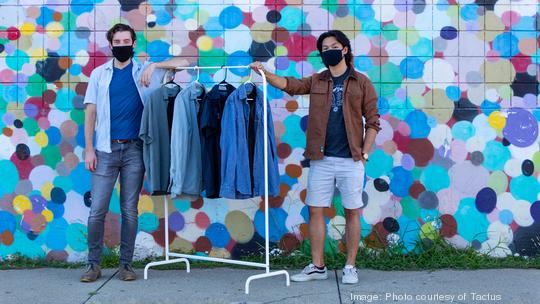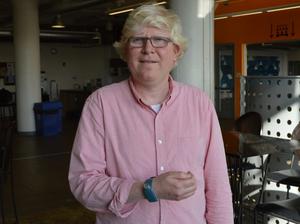
With streaming services like Spotify, Apple Music and Tidal, music has become more accessible than ever before—through a monthly subscription, listeners gain access to an extensive music library.
However, easily portable and accessible music remains exclusive to a whole community of people.
Jeremy Chow, co-founder of Tactus, is developing a product to make music more inclusive for those who are Deaf or hard of hearing.
“Tactus is developing a wearable device that allows Deaf and hard-of-hearing individuals to experience music through vibrations on their body,” Chow said.
The company, which is named after a rhythmic unit used in 15th-century music, takes digital audio signals and optimizes them to be felt through vibrations on the body, instead of heard through vibrations in the air. Once the signal is converted into vibrations, those vibrations are sent to specific locations on the torso through Tactus' vibrotactile device, which looks like a vest. With the vibrotactile vest, members of the Deaf and hard of hearing community are able to experience music in a portable way.
"We want to make [the device] extremely accessible—as accessible as a hearing person putting in headphones, turning their phone on and playing their music on Spotify or iTunes," Chow said
Tactus started as a senior design project for Chow and fellow Northeastern University classmate Lucas Barton. They worked closely with Laurie Achin, a Deaf professor who taught American Sign Language and Deaf studies at Northeastern for two years as a visiting lecturer.
Achin is also a performer, dancer, choreographer, former Deaflympic athlete and a member of the Gallaudet University Athletics Hall of Fame. Chow and Barton decided to make a wearable vest for Achin so she could receive live music feedback while she was dancing.
In 2018, Achin tested out the original vibrotactile vest. She wrote, “It allowed me to get a better feeling of the rhythm of music and vibrations lets me know what type of beat and how many counts if I wanted to dance, I was able to understand the music better through vibration (beats and bass).”
However, she did note one flaw of the original design: It was awkward and heavy.
Achin’s feedback inspired the Tactus team to keep working on the device after graduation. They officially incorporated Tactus as a company in 2019.
“I think the biggest reason why we decided to pursue it was because of her words to us at the end of the project," Chow said. "She said, ‘I think you guys have something here that could potentially help a lot of people in the Deaf community.’ That really motivated us and inspired us to continue to work on the project.”
Since the first iteration of the vest, Tactus has been working with a tailor to improve the look and feel of the product. Originally, the device looked like a combination of a vest and a harness—-obviously designed by a mechanical engineer. Chow said that making the vest look like normal clothing was a weird idea because neither he nor Barton had fashion experience.
Now, after several rounds of feedback, the vest looks more like everyday garb. The current design features an underlayer and outer layer. The underlayer is a compression vest with electronics sealed in and embedded into the vest. And that outer layer? Purely for aesthetics, according to Chow (a leap for the previously unfashionable engineers).
This week, Tactus, which was part of this year's MassChallenge Boston cohort, is exiting stealth mode and launching its first official beta test. The goal of the beta test is to find any flaws with the vest, electronically or design-wise, and fix them before taking the product to manufacturers.
What’s next for Tactus? After the product goes through testing and manufacturing, the company wants to travel to different Deaf schools around the United States and demo the vest, either in a presentation or focus group format.
Chow wanted to combine his passion for music with engineering, and he was able to do that with Tactus. Growing up, he played violin and guitar and thoroughly enjoyed connecting with friends through music. Through the vibrotactile device, Deaf and hard of hearing individuals can experience music in a new, portable manner.
There are other ways that Deaf and hard-of-hearing people can experience musical vibrations, such as going to a live concert or turning up the volume on a car stereo and feeling the bass, and there are musical interpreters who express the lyrics and emotions of songs. But Tactus' mission is to create an altogether different experience.
“The goal is to create a medium in which Deaf and hard-of-hearing individuals can experience music and make connections with people in a different way, whether it be within the Deaf community...or being able to connect with the hearing community and allowing those connections to build through music,” Chow said.
Emma Campbell is a contributing writer for BostInno.





